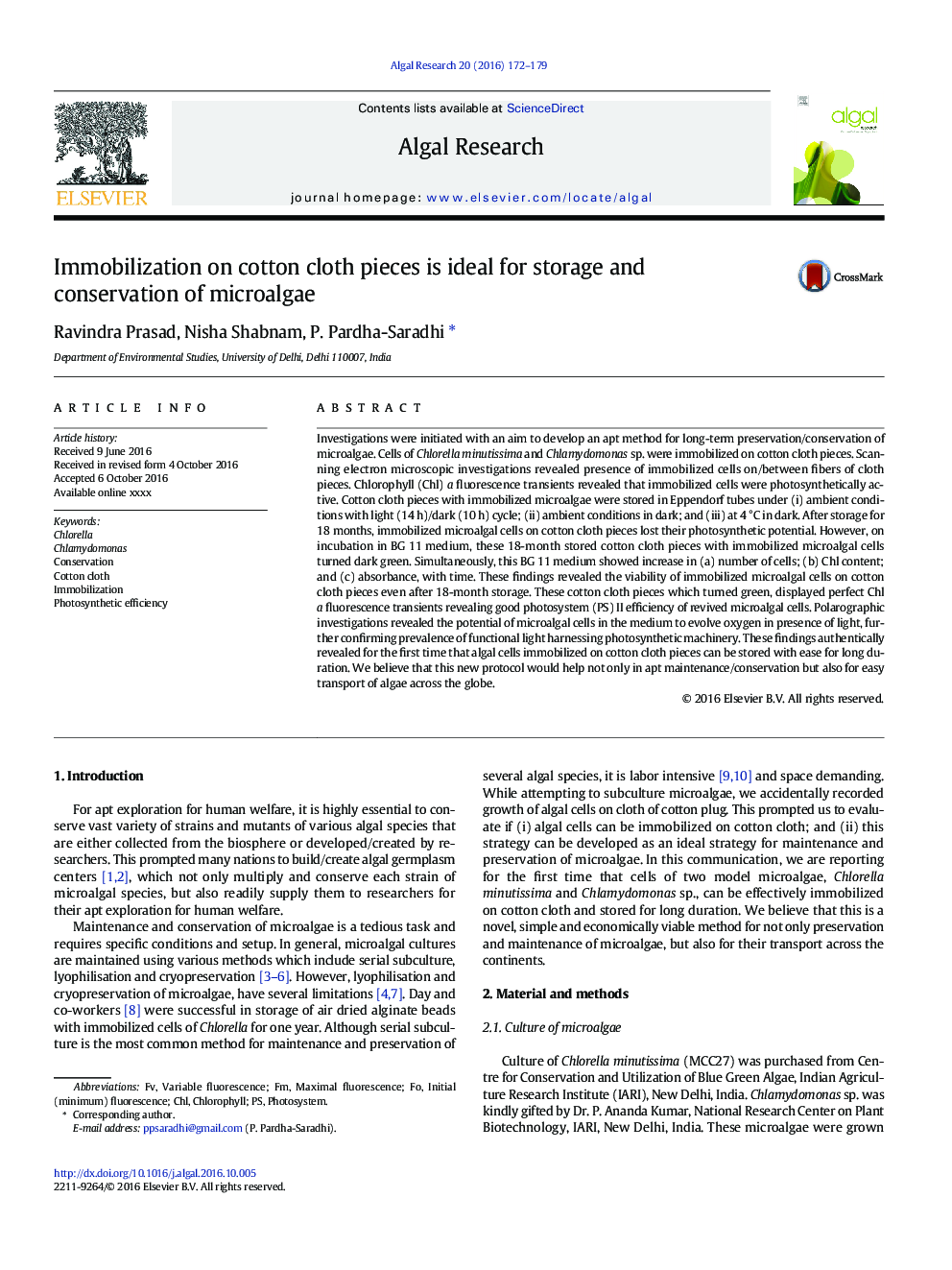| Article ID | Journal | Published Year | Pages | File Type |
|---|---|---|---|---|
| 5478584 | Algal Research | 2016 | 8 Pages |
Abstract
Investigations were initiated with an aim to develop an apt method for long-term preservation/conservation of microalgae. Cells of Chlorella minutissima and Chlamydomonas sp. were immobilized on cotton cloth pieces. Scanning electron microscopic investigations revealed presence of immobilized cells on/between fibers of cloth pieces. Chlorophyll (Chl) a fluorescence transients revealed that immobilized cells were photosynthetically active. Cotton cloth pieces with immobilized microalgae were stored in Eppendorf tubes under (i) ambient conditions with light (14 h)/dark (10 h) cycle; (ii) ambient conditions in dark; and (iii) at 4 °C in dark. After storage for 18 months, immobilized microalgal cells on cotton cloth pieces lost their photosynthetic potential. However, on incubation in BG 11 medium, these 18-month stored cotton cloth pieces with immobilized microalgal cells turned dark green. Simultaneously, this BG 11 medium showed increase in (a) number of cells; (b) Chl content; and (c) absorbance, with time. These findings revealed the viability of immobilized microalgal cells on cotton cloth pieces even after 18-month storage. These cotton cloth pieces which turned green, displayed perfect Chl a fluorescence transients revealing good photosystem (PS) II efficiency of revived microalgal cells. Polarographic investigations revealed the potential of microalgal cells in the medium to evolve oxygen in presence of light, further confirming prevalence of functional light harnessing photosynthetic machinery. These findings authentically revealed for the first time that algal cells immobilized on cotton cloth pieces can be stored with ease for long duration. We believe that this new protocol would help not only in apt maintenance/conservation but also for easy transport of algae across the globe.
Keywords
Related Topics
Physical Sciences and Engineering
Energy
Renewable Energy, Sustainability and the Environment
Authors
Ravindra Prasad, Nisha Shabnam, P. Pardha-Saradhi,
